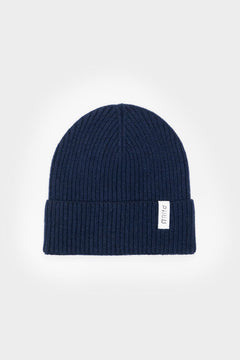The birth of jeans, or rather denim, has really marked the history of clothing. Since its appearance in the fashion industry as a workwear garment, this fabric has been adapted over the years to all areas of clothing.
It really makes everyone agree. Comfortable, suitable for every season and above all fashions.
But have you ever wondered what its true cost is?
Over time, jeans have become affordable for everyone thanks to a lower and lower price, especially in the huge fast fashion clothing chains. But as the price on the price tag decreased, another price was rising: the social and environmental price coming from the production of the jeans itself.
This is what we want to talk about in this article: the unsustainability of the production of jeans, the pollution that it produces and its enormous environmental impact, together the health of the workers employed in the production of denim.
Acquiring a new awareness does not mean having to stop wearing this fabric. In fact, we will show you an alternative to continue wearing your beloved jeans whith an eye to the future of sustainable fashion.
The environmental unsustainability of jeans production
Jeans, if produced through current techniques, represent a danger for the environment.
But how are jeans made?
The production of the denim fabric absorbs about 35% of all world cotton production. As a consequence of the increase in demand, the need to produce more cotton has grown.
This inevitably leads to the massive use of water, dyes, pesticides and chemicals that have a very high environmental impact.
Just think that to produce a single kilo of cotton fibers you need 10,000 liters of water. Then the cotton obtained will be colored by dipping it in chemical dyes that contain numerous heavy metals and needs a lot of water as well.
Once the denim is obtained, then the problem is the finishing of this fabric, that is made through some techniques that are very harmful to the health of those who produce this fabric. One of the techniques with the greatest environmental and health impact, for example, is precisely the technique of sandblasting the jeans to whiten them and give that used effect that is so appreciated in this type of clothing.

The sandblasting technique of jeans
Sandblasting is a technique used for bleaching denim and consists of an abrasion procedure applied to jeans in order to give it a used and worn appearance. This procedure is carried out by means of a sand sprayed on the fabric through the use of a compressed air gun.
The real problem is the sand that is used to this process: silica sand, a highly toxic substance for which the use at work is already regulated in many countries.
Through sandblasting, in fact, it is very easy to breathe this dust that causes lung cancer and silicosis, a potentially fatal disease even when the levels of exposure to silica sand are very low.
If we consider that this type of processing it is not regulated in countries where work has a lower cost also due to the lack of guarantees and safety measures for the health of workers, it is clear that the social cost of selling a pair of jeans at 50 € it is too high. It is in fact important to also remember the unsustainable working conditions to which these workers are subjected: unhealthy environments, exhausting hours of work and no regular contracts nor trade union associations.
Contracting their production in the poorest countries is normal for all the big brands of the clothing industry. So they can guarantee low prices due precisely to the exploitation of labor.

If you don't want to be an accomplice to all of this, it is not necessary to give up wearing this piece of clothing. Of course, an ethical and environmental friendly production can never come out with a final price of 50 € per jeans garment. Starting from the assumption of paying more for your next jeans, you can then put into practice more ethical choices. For example to avoid the fake old jeans that required the sandblasting technique, or choose the upcycled jeans, for which a new coloring was not necessary and does not come from virgin cotton.
Jeans and sustainable fashion: a possible combination?
In recent years, when the unsustainability of jeans production has become evident, many associations have pointed the finger at the big brands that buy jeans for a few euros every piece in companies where worker safety is totally ignored, even if they come into contact with harmful substances.
From this conception many initiatives were born that wanted to give an answer to the unsustainability of the fashion industry. Just like we did at Rifò, for years we have been fighting to promote a more sustainable and more emotional concept of fashion. For this philosophy, a garment is made to last over time and it is not necessary to change it every year.
It is from this thought that our upcycled jeans sweaters were born: high quality and low environmental impact garments, born thanks to the upcycling of old jeans.
If you want some advice about how to give your jeans a new life without throwing them away, take a look at this article where we explain how to recycle your jeans.

Conclusions
Sustainable fashion is possible! In fact, there are recycled and eco-sustainable jeans that do not pollute. For example those produced through an upcycled yarn.
We at Rifò, for example, produce different garments through this very ductile yarn: sweaters but we are also working on denim fabric garments.
If you also want to support our project, visit our online store where you can find our 100% upcycled jeans clothing.










